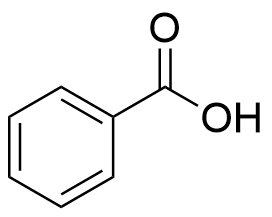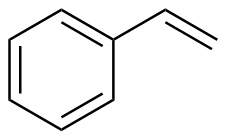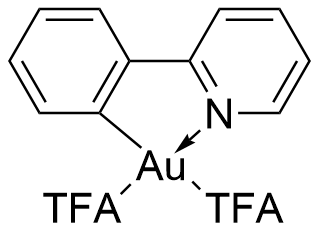Routine services
The most common types of analyses we perform are:
- Electrospray ionization (ESI) mass spectrometry of pure samples or mixtures on the maXis II instrument.
- Option for high-resolution mass spectrometry (HRMS) with suggested molecular formula and simulated isotopic pattern.
- Electron ionization (EI) mass spectrometry, with preceding gas chromatography (GC), of pure samples or mixtures on the SCION instrument.
Additional services in brief
The maXis II instrument can use additional ionization methods in the form of atmospheric pressure chemical ionization (APCI) and atmospheric pressure photo ionization (APPI). There is the option of high-pressure liquid chromatography (HPLC) in combination with ESI, APCI and APPI. There is also the option of GC to be used with APCI. For analyzing partially volatile liquid or solid samples, a direct insertion probe (DIP) is available with APCI and APPI ionization. High-resolution mass spectrometry can be used for all the above.
The SCION instrument has the option of chemical ionization (CI) as an alternative to EI for GC-MS analysis. A direct insertion probe (DIP) is available with for analysis of partially volatile liquid or solid samples.
Additional information on available instrumentation and methods
Ion sources on the maXis II instrument
ESI (electrospray ionization)
This is the most used ion source in our laboratory. It is appropriate for polar compounds. In ESI(+) (i.e. in positive mode), the base peak is usually [M + H]+ or [M + Na]+ when analyzing molecular compounds; for salts, the base peak is usually the cation of the salt. The sodium originates from the sodium formate solution used for calibration. ESI(+) is appropriate for compounds with free electron pairs that can bind H+ or Na+. Very rarely, one can see other cations such as M•+ or [M – H + 2Na]+. In negative mode, ESI(–), the base peak is usually [M – H]– for molecular compounds; for salts, the base peak is usually the anion of the salt. ESI(–) is appropriate for compounds that can be deprotonated. The ESI source can be used with high pressure liquid chromatography (HPLC).
APCI (atmospheric pressure chemical ionization)
This ion source can be used with polar to less polar compounds and solvents; however, the analyte has to be somewhat volatile. For APCI(+), the base peak is usually [M + H]+ for molecular compounds; occasionally it will be M•+. For APCI(–), the base peak is usually [M – H]– for molecular compounds; sometimes M•–. The APCI source can be used with DIP (direct insertion probe, no solvent), HPLC and gas chromatography (GC).
APPI (atmospheric pressure photoionization)
This ion source can be used with all solvents and with compounds of all polarities, although the analyte has to be somewhat volatile and have an ionization energy below 10 eV (usually something with a double bond). For APPI(+), the base peak is usually [M + H]+ or M•+. For APPI(–), the base peak is usually [M – H]– or M•–. The APPI source can be used with DIP (no solvent) and HPLC (in theory it is also compatible with GC, but it would require rebuilding the ion source and GC).
Ion sources on the SCION instrument
EI/ECNI (electron ionization / electron capture negative ionization)
This ion source can be used with most molecular compounds, but is has to be coupled with the instrument's GC. The analyte has to be somewhat volatile. For EI (only positive mode), the base peak is usually M•+ or more often a fragment. For ECNI (only negative mode), the base peak is usually M•– or fragments thereof. The EI/ECNI source can be used with DIP (no solvent).
CI/NICI (chemical ionization / negative ion chemical ionization)
This ion source can be used with most molecular compounds, but is has to be coupled with the instrument's GC. The analyte has to be somewhat volatile. Usually, methane is used as the reagent gas. For CI(+), the base peak is usually [M + H]+ or fragments thereof. For NICI(–), the base peak is usually M•– or fragments thereof. The CI/NICI source can be used with DIP (no solvent).
Examples of choices of ion sources
|
|
|
|
|
Bovine serum albumin |
|
|
ESI(+) |
✔ |
✘ |
✘ |
✔ |
✘ |
|
ESI(-) |
✔ |
✘ |
✘ |
✔ |
✘ |
|
APCI(+) |
✔ |
✘ |
✘ |
✘ |
? |
|
APCI(-) |
✔ |
✘ |
✘ |
✘ |
? |
|
APPI(+) |
✔ |
✘ |
✔ |
✘ |
✔ |
|
APPI(-) |
✔ |
✘ |
✔ |
✘ |
? |
|
GC-EI(+) |
✔ |
✔ |
✔ |
✘ |
✘ |
|
GC-ECNI(-) |
✔ |
✔ |
✔ |
✘ |
✘ |
|
GC-CI(+) |
✔ |
✔ |
✔ |
✘ |
✘ |
|
GC-NICI(-) |
✔ |
✔ |
✔ |
✘ |
✘ |
Solvents in use for analysis
The delivered samples need usually be diluted before analysis; typical dilutions are between 1:1,000 and 1:1,000,000. The solvent used for the dilution will also be the solvent used in the analysis and needs to be compatible with chosen ion source, as follows:
ESI (maXis II)
The solvent has to be polar; the usual choice is MeOH, but MeCN and water works fine too. Methanol will typically result in a a higher background signal compared to MeCN and water, but has the benefit of better ionization efficiency; in addition, the (known) background signal can be used for internal calibration to give very low mass errors.
APCI (maXis II)
The solvent is not restricted by polarity, typically MeOH and water is used. Acetonitrile can also be used in mixtures with other solvents, but pure MeCN should be avoided for prolonged use as it carbonizes the corona discharge needle. It is possible to also forgo the use of solvent altogether using the DIP.
APPI (maXis II)
The solvent is not restricted by polarity, typically MeOH, MeCN and water is used. It can be beneficial to add dopants such as toluene or acetone to the solvent in order to enhance ionization. It is possible to also forgo the use of solvent altogether using the DIP.
EI and CI (SCION)
The ion source is coupled with a GC and the choice of solvent is thus restricted by this fact. Acetonitrile is typically used, but MeOH is also possible. Water is incompatible with the GC liner and column.
Extras—additional analyses available on the maXis II
HRMS (high resolution mass spectrometry)
The high resolution on the maXis instrument can be used to deduce molecular formulas from a compound's mass defect. This is usually done to verify that a compound observed in a mass spectrum has the same molecular formula as the assumed compound of the sample. However, this technique can also be used to try to identify unknown compounds.
If the molecular formula of your compound is unknown, but you know, or suspect, that it might contain elements other than H, C, N and O, please let us know; unless specified otherwise, the software only includes those four elements in its fit.
The HRMS analysis works best for ESI with MeOH as the solvent as it gives the best calibration and lowest mass errors. It works less well the heavier the compounds are since the number of atomic combinations producing the observed mass increases.
CID (collision induced dissociation)
Ions can be selectively fragmented using N2 as a collision gas (other gases such as Ar are possible too). This gives some structural and physical information about the compound and can be used to confirm the molecular formula since all fragments should be subsets of the latter.
ETD (electron-transfer dissociation)
Multiply charged cations can be fragmented using ETD which can be useful for top-down analysis of peptides/proteins and polymers. Peptides are selectively cleaved at C–N giving c-ions and z-ions.
The ETD function is currently not in use on the instrument.
Sample introduction and chromatography
DI (direct injection, maXis II)
The diluted sample is injected into the ion source from a syringe. This is the most common injection technique for the maXis II instrument and will be used unless anything else is specified.
DIP (direct insertion probe, maXis II and SCION)
The DIP allows for neat samples (i.e. without solvent) to be introduced into the ion source. On the maXis II instrument, DIP can be used with APCI and APPI, but not with ESI, HPLC or GC. On the SCION instrument, the DIP can be used with EI/CI and GC.
HPLC (high pressure liquid chromatography, maXis II)
Samples that are mixtures can benefit from HPLC. The maXis instrument has the option of HPLC in combination with ESI, APCI and APPI; the HPLC also has a UV-VIS detector with up to four wavelengths at a time. Samples analyzed with ESI has to use reverse phase HPLC.
Since HPLC takes more time and effort than samples without chromatography, we kindly ask that it is not requested unless it is necessary; in any case, we need to know why HPLC is necessary so we know what to look for, so please make a comment in the request telling us. It is also of great benefit if chromatographic conditions can be supplied with the request, e.g., from reverse phase TLC; a UV-VIS spectrum will also be helpful. Feel free to discuss your analytical needs with us and we will be happy to help.
The HPLC is normally fitted with a C18 on silica-column.
GC (gas chromatography, maXis II and SCION)
Samples that are mixtures can benefit from GC. On the SCION instrument, GC comes as standard with every analysis. On the maXis instrument, GC can be done in combination with APCI should the need present itself.
As with HPLC above, it is of great help if chromatographic conditions, e.g., from GC-FID, can be supplied with the sample; the boiling point of your sample, if known, will also be useful.
Preparing and delivering your samples
Deliver your sample, clearly marked with the sample identifier (and possibly your name) in the bookshelf outside of room V252 in the Chemistry building.
Safety
If there is anything particular about the safe handling of your sample we need to know, please make sure that we are made aware.
Vials
The samples should be delivered in small vials, e.g., 0.5 dram vials, GC/HPLC-vial (screw cap with septa) or Eppendorf vials. Be aware that things made of plastic such as Eppendorf vials have a strong tendency to leak slip agents and plasticizers into the sample that will show up in the mass spectra. This is especially common for the slip agent erucamide (M = C22H43NO, [M + H]+ = 338.3417, [M + Na]+ = 360.3237). Vials can benefit from being rinsed with a solvent like MeOH before use.
If possible, please avoid the 0.5 dram vials with snap caps made by Assistent (#42783004) which are available at the central storage of the Department of Chemistry. The caps have a tendency to crack, leading to samples evaporating and spilling; they are also difficult to open and close and the bottom of the vials are often not flat.
Reactive samples or sensitive samples
If your sample is air, time or temperature sensitive, please deliver it while the lab is open so it can be refrigerated/frozen or analyzed immediately. If necessary, contact us to set up an appointment.
Isotopically labeled samples
If your samples are isotopically labeled, it will have a different mass spectrum from the samples with a natural abundance of isotopes. It is thus important for us to know which atoms are substituted by isotopes.
In ChemDraw, you can isotopically label the structure by selecting the Text Tool, slicking an atom and writing the isotope mass number in superscript before the atom, e.g., 13C. ChemDraw will recognize this is a carbon-13 atom and change the exact masses and formulas. ChemDraw also recognizes D as deuterium.
In Ketcher 2.3 Standalone, select the lasso tool and double-click the isotopically labeled atom. Under Isotope, write the mass number. The formula and exact mass will update accordingly.
Take care when copying and pasting the formula that there are no ambiguities. For instance, the formula for ethanol-2-13C will be shown as C13CH6O and when pasted into BookitLab it will be formatted as C13CH6O which is hard to read and ambiguous. Paste it rather as C[13C]H6O.
Remember that if a compound is deuterated at a protic site, it might exchange hydrogens depending upon the solvent used in the analysis; in addition, in negative ionization mode, an isotopically labelled protic site may become deprotonated.
NMR samples
Take extra care when delivering samples with NMR solvents.
Some solvents common in NMR are unsuitable for MS analysis. If the solvent is ionizable and in excess of the analyte, you will generally only see the solvent in MS. This can be the case for DMSO and DMF.
A protic sample dissolved in a protic deuterated solvent for NMR may exchange hydrogens, and if the subsequent MS-analysis is done in an aprotic solvent, you may see the deuterated sample.



